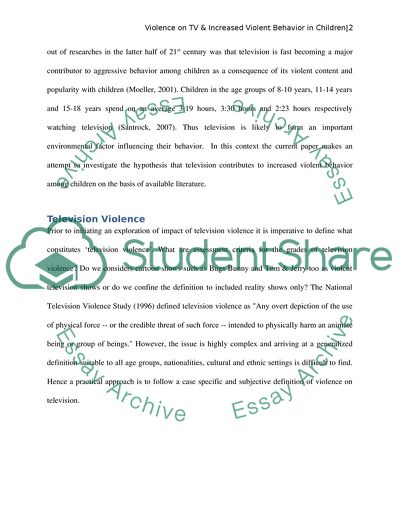Cite this document
(“Violence on TV and Violent Behavior in Children Research Paper”, n.d.)
Violence on TV and Violent Behavior in Children Research Paper. Retrieved from https://studentshare.org/psychology/1596110-does-violence-on-tv-contribute-to-increased-violent-behavior-in-children
Violence on TV and Violent Behavior in Children Research Paper. Retrieved from https://studentshare.org/psychology/1596110-does-violence-on-tv-contribute-to-increased-violent-behavior-in-children
(Violence on TV and Violent Behavior in Children Research Paper)
Violence on TV and Violent Behavior in Children Research Paper. https://studentshare.org/psychology/1596110-does-violence-on-tv-contribute-to-increased-violent-behavior-in-children.
Violence on TV and Violent Behavior in Children Research Paper. https://studentshare.org/psychology/1596110-does-violence-on-tv-contribute-to-increased-violent-behavior-in-children.
“Violence on TV and Violent Behavior in Children Research Paper”, n.d. https://studentshare.org/psychology/1596110-does-violence-on-tv-contribute-to-increased-violent-behavior-in-children.


